The EU Commission has just ended its consultation cycle on its upcoming Heat Pump Action Plan, which aims to accelerate the rollout of heat pumps across the EU as a means to decarbonise heating. EuropeOn has followed this endeavour as electrical installers will be, yet again, in high demand to contribute to increasing heat pump installations.
The main issue remains the shortage of qualified workers. This has featured prominently in the consultation and debates around heat pumps, as all concerned stakeholders have now recognised the need to act on this dimension. At EuropeOn, a few key points have emerged in this discussion:
- the main issue is a shortage of workers, before a shortage of skills. The first step for authorities should be to assess the gap between available and needed workers, in light of deployment targets. An EU Green Workforce Observatory could oversee this assessment and collect and aggregate the data already available at state and local level. National authorities should develop communication campaigns aimed at attracting more students and workers towards relevant fields.
- Public funding for trainings should remain fully independent from commercial interests, should not fund private trainings provided by manufacturers/suppliers and not focus on specific brands. Investments must be made in training centres and to fund apprenticeships.
- Certification requirements should be handled carefully, be dealt with at national level, and not harmonised across the EU.
- Short trainings are not the answer. Heat pumps should be integrated into buildings and energy systems, calling for integrators (rather than installers) with full skillsets.
Additionally, other issues relating to infrastructure and financing have arisen:
- Electrical installations in existing buildings are often older and not designed to sustain higher loads as required by heat pumps (or EV chargers for that matter). This Action Plan must consider electrical installations and ensure incentive structures supporting heat pump deployment address this shortcoming.
- This entails ensuring electrical installations are inspected on a periodical basis as well as when high-load devices are installed (such as heat pumps, EV charging or PV), and including necessary upgrades of electrical installations to heat pump incentives and subsidies.
- Financing and subsidies will be required to incentive consumers to switch to heat pumps, especially in states where power prices are too high for heat pumps to be as financially attractive as gas boilers.
- Grid capacity is another increasing issue that authorities will have to deal with, as, similarly to electrical installations, they will also be necessary to support the switch to EVs .
- Communication between trades should be fostered for a smoother rollout of heat pumps in buildings, as they require a cross sectoral skillset and coordination between electrical and HVAC installers .
